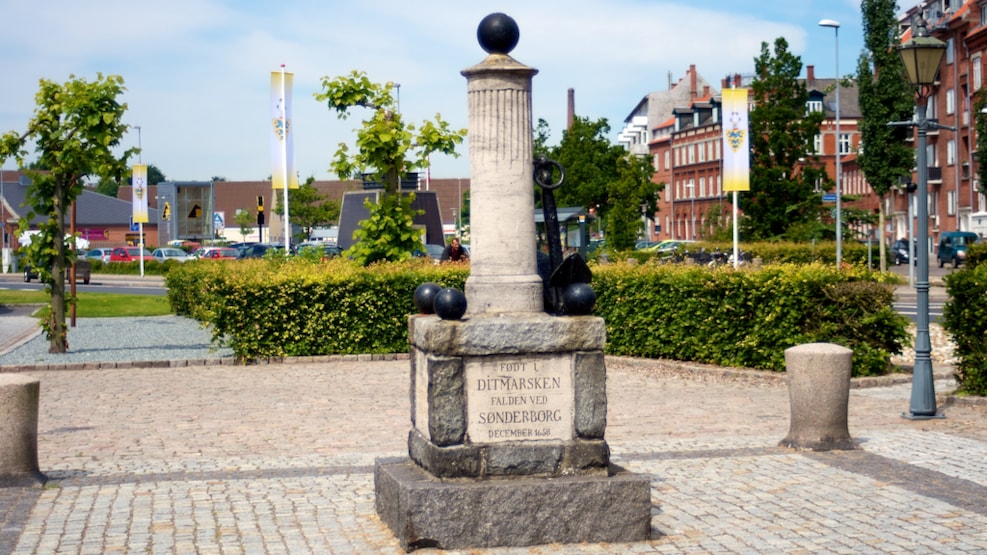
1. stop: The Green Clover Path - Bredal's Monument
At Vesterhavnen you will find a monument in honor of Captain Peder Bredal. He protected Nyborg during the Swedish Wars on his four ships off of Nyborg's coast. On 14 November 1659, he prevented the Swedish soldiers from conquering the country and thus gained great importance for Denmark.
The Battle of Nyborg
Denmark was close to being conquered by Sweden during the wars against Sweden in the years 1657 to 1659. However, the defeat was averted due to the victory in the Battle of Nyborg on 14 November 1659. The fact that it almost went wrong is because the belts froze to ice. This enabled The Swedish army to cross the belts, which were otherwise controlled by the Danish navy.
Captain Peder Bredal
In the autumn of 1657, Captain Peder Bredal was with his squadron in Little Belt to prevent a Swedish transition from Jutland to Funen. He was ordered to lay off Nyborg with his four ships when perhaps the harshest winter in historical times in December of this year created incipient ice formations in the Danish waters. Here Bredal’s ships lay frozen in the ice when the Swedes captured Nyborg city and fortress on 31 January 1658. He and his people lacked almost everything: provisions, drinks, warm clothes and firewood, which meant that a large part of the crew was rendered incapacitated by disease. He refused to surrender his ships to the Swedish troops in Nyborg despite these circumstances.
Instead, Peder Bredal had the ships doused with water, so that they were covered by an ice armor, which made them impossible to shoot through, and they also became so slippery that the Swedes could not enter them. While Bredal and his people repelled one Swedish attack after another, they also managed to ice all four ships beyond the range of the Swedish guns in four days with the help of axes and saws.
At the same time, the enemy forces had other things to think about. The majority of the Swedish soldiers in Nyborg were sent to Langeland, where they crossed the Great Belt to Lolland.
The four ships could sail to Copenhagen when the ice lifted in April. In Copgenhagen, Bredal and his people were received with cheers. He was appointed vice admiral and fought several times with great skill against Swedish naval forces.
On 4 December 1658, he attacked with four ships a superior Swedish force of ten ships off Sønderborg. Here he was hit by a cannonball and died four days later of his wounds.
Navally, Bredal's efforts meant little, morally it was a glimmer of light in an otherwise dark time - and his ability to get the crew to persevere and fight under the most desperate circumstances that any Danish naval unit has operated under has never since been surpassed.